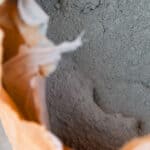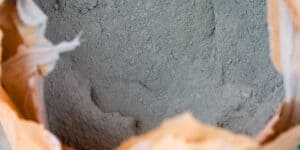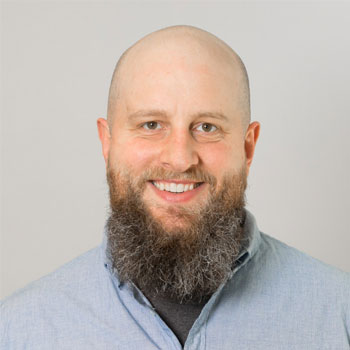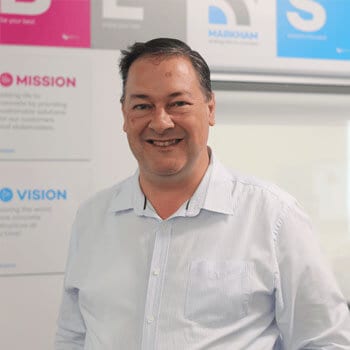We’ve talked about this in other places, but cement manufacturing is a real problem child when it comes to carbon emissions; yet concrete construction isn’t going away any time soon. In this deeply interesting podcast segment, we meet Dr Jesse Benck of Sublime Systems in Massachusetts USA, where they’re working to completely change the process of cement production. They’re aiming high – not just net zero carbon, but true zero – and have adopted a practical, scalable approach from the outset to bring this process to the huge global market that is concrete construction.
The Electric Vehicle of Cement Making

Invisible Strength
The Electric Vehicle of Cement Making
/
RSS Feed
The Electric Vehicle of Cement Making
Sublime Systems: sublime-systems.com
Dr Jesse Benck (LinkedIn) https://www.linkedin.com/in/jesse-benck-b114508a/\
CNBC article June 24th, 2023: https://www.cnbc.com/2023/06/24/sublime-systems-co-founders-making-the-electric-vehicle-of-cement.html
View the Transcript
BRENDAN: G’day and thank you for joining us in listening again to the Invisible Strength podcast from MARKHAM! I’m Brendan Stead, and today with us we’re privileged to have Doctor Jesse Benck. Doctor Jesse Benck is Vice President of Research and Development at Sublime Systems, a company revolutionising the cement industry with its breakthrough process to produce low carbon cement. With a pilot plant in Somerville, Massachusetts, capable of producing 100 tons of decarbonised cement annually, Sublime recently secured a $40 million Series A funding to drive growth. Jesse leads Sublime’s research and development efforts to develop their decarbonised manufacturing process, as well as validate the performance of Sublime’s cement. He holds a PhD in chemical engineering from Stanford University and has dedicated his career to R&D in electrochemistry and materials for sustainability applications. Welcome aboard, Jesse!
DR JESSE: Thank you. I’m pleased to be with you. Appreciate it.
BRENDAN: It’s really good! An article on Sublime’s work in cement production caught our attention. I think the article referred to the ‘electric vehicle of cement making’. Can you give us a bit of an outline of what that involves?
DR JESSE: Absolutely. Yes. I think it’s a great analogy. As you and your listeners know, historically, our vehicles have been powered by fossil fuels – gasoline or diesel. And recently the trend has been to decarbonize by electrifying the vehicles where you know we have electric battery car. There’s, especially as the electricity grid is decarbonizing with more renewables like solar, wind and hydroelectric, that helps decrease the CO2 intensity associated with transportation.
So we’re kind of capitalising on the same macro trend at Sublime Systems, and we’re aiming to electrify cement production. Historically, cement has been made by burning fossil fuels; not gasoline in this case, but coal is typically used to heat up limestone and some other ingredients in a huge kiln; heating to 1400 or 1500°C to make Portland cement. And both the combustion of the coal as well as the decomposition of the limestone feedstock contribute to CO2 emissions; and that’s why cement manufacturing today accounts for around 8% of all global CO2 emissions. So it’s clearly a huge target for decarbonisation.
Sublime’s approach is to use electrochemistry. So we have a totally new and different process. It doesn’t require high temperature fossil fuel combustion at all, but instead we have this electrochemical reactor that can be powered by renewable electricity like solar or wind, and it can drive a set of chemical reactions that occur at near ambient temperature and in the aqueous phase, like in a water-solution based chemistry to produce cement. And by doing this, we’re able to tackle both of the two major sources of CO2 emissions in the conventional cement making process. We don’t have the fossil fuel combustion as already discussed; and also because our process chemistry is different, we don’t have to use limestone as the feedstock. So we don’t have to, you know, decompose the calcium carbonate amid the CO2 that’s bonded into the rock; but instead we can use other calcium-containing materials that don’t have CO2 bonded into the rock and still use them to make cement.
So I like the label, “the electric vehicle of cement making”. I think obviously there are some details that are wrong, but at a conceptual level, I think that’s a great way to think about Sublime’s innovation.
BRENDAN: It’s very good, really interesting, quite intrigued by it, to be honest. Could you explain more about… We talk about reduced carbon or net zero carbon – and where what you’re working on sits in relation to that?
DR JESSE: Absolutely! There are some technologies out there that can achieve net zero carbon emissions; for example, post-combustion carbon capture. If you use a conventional kiln to make Portland cement by burning coal and emit the CO2 from the limestone decomposition as well, it is possible in theory to put a carbon capture system onto that plant and capture and sequester the carbon afterward. That does add a lot of cost and complexity in carbon capture, and sequestration may not be applicable to all geographical locations on the world. For example, if there’s not a good place to store the CO2.
So we’re excited that our solution is, you know, emissions avoidance. We don’t emit the CO2 in the first place. And that’s how we have a pathway to greater than 90% decarbonized cement by 2030. No carbon capture and sequestration is required. We just don’t emit the CO2 in the 1st place. Which we think will make this easier to scale and deploy in many locations across the world.
BRENDAN: That’s interesting. So approaching true zero versus net zero, as it were?
DR JESSE: Exactly right. That’s well said.
BRENDAN: And one thing that you mentioned there that was of some interest to me is the limestone replacement. Can you just open that up a little bit again? You spoke about using the different sources that don’t have the carbon already captured.
DR JESSE: Absolutely right. So limestone, the material used today is calcium carbonate. As I mentioned, we’re able to use materials that are in the family of calcium silicates. So this includes both a variety of abundant natural rocks and minerals, such as basalt or gabbro, that are among some of the most abundant rocks on the surface of the Earth. And there are also various industrial waste products or byproducts that contain calcium and silica, such as ashes from coal power plants, slags from the production of metals, or mine tailings. You know, waste products from mining. And because our process chemistry is different, we have this kind of aqueous solution-based chemistry. We can take these various calcium silicate materials, put them into our process, use the solution to dissolve out the calcium. If there are other impurities in the material, such as iron or magnesium or nickel, our process can separate and purify those out as well. And we end up with the components that we need to make the cement, which is the calcium and silica that can go into the final cement product. And so our kind of new process chemistry enables us to use this different class of feedstocks that’s not accessible through conventional Portland cement making.
BRENDAN: Interesting. Yes, it’s very interesting indeed. Yes, we’re quite aware of the reduction in the availability of flyash and that sort of thing; so it’s quite on the ground. Our listeners I think will be quite familiar with what you’re talking about.
Thinking in terms of the industry, as I say on the ground, how do you think the prices will sit compared to current costs of manufacturing?
DR JESSE: Yes, our long term goal and our expectation is that eventually once our process is scaled up and the technology is matured, in perhaps, you know, 8 to 10 years from now, we have a pathway to reach cost parity with conventional Portland cement making. So we think, ultimately, to drive the widest scale adoption possible, we need to reach cost parity with the current processes. We know that the industry is very cost sensitive, so to really make the biggest impact possible, that’s what we’re aiming for.
In the short term, you know, we’re a brand new approach and a new technology that’s competing with Portland cement making, which is more than 100 years old and it’s a huge globally scaled, technically mature industry. So the reality is, in the short term, the process is a little bit more expensive, but at least our first full scale commercial manufacturing facility, we anticipate that the cost of our cement will be less than the cost of Portland cement plus carbon capture, which is, you know, the alternative that I described before. So we’ll be under that bar. And then as the technology continues to scale and mature, eventually we’ll be able to reach cost parity with Portland cement, with no carbon capture and without even accounting for any financial incentives for decarbonization, such as carbon taxes or credits.
BRENDAN: Sounds very good. And it touches on another question I had in my mind. The concrete industry is huge globally, of course. Can you share some thoughts around the timeline of introducing the technology and you might say in an ideal world and how to scale up the process?
DR JESSE: Absolutely. So since day one we’ve understood that cement is a massive industry, and to really have the impact that we’re seeking to have, eventually we have to reach the same scale as Portland cement making. So from the beginning, we’ve designed the process to scale, and our focus through our R&D and engineering efforts internally at Sublime has been focused on scaling the process up. So when we started, this was an idea in a research lab at MIT in the Department of Material Science and Engineering, and we made some initial samples of cement at the gram scale. Since then, through our R&D and engineering at Sublime, we’ve scaled up so our facility now can make on the order of 100 tons per year of cement. So we’ve already come a long way, many orders of magnitude larger than where we started, but we know we have a long way to go.
So what we’re working towards now is what we’re calling our demonstration plant; that will have a capacity of around roughly 25,000 tons per year of cement making, and we’re aiming to have that commissioned by the end of 2025, so that it can start producing in 2026. And then after that, we’re aiming for what we’ll call our first full size commercial scale cement manufacturing facility, which will be around 1,000,000 tons per year of cement and the details are still being worked out of, of course, but the timeline for that is in 2027-2028. Beyond that, of course, we hope to deploy globally and that will likely happen in the 2030s.
So we certainly have a way to go, but we’re excited about how far we’ve come and we think we’ve got a clear path to reaching the global scale that’s necessary to have a massive impact.
BRENDAN: That’s brilliant. Yes, very exciting. So Jesse, you touched on the history of how it started. Can you just open that up a little bit more, about setting up Sublime, and when you when you joined it yourself and your backstory?
DR JESSE: Absolutely. Yes. So just to touch on my history a little bit, as you mentioned at the top through the the bio that you kindly provided and read, my background is in chemical engineering. I have worked in the field of electrochemistry and materials for more than 15 years now. I worked on things like solar fuels, like producing hydrogen from sunlight, as well as batteries, and I guess from the beginning I’ve been interested in decarbonizing our civilization; because I understand how important that is to combat climate change.
I did not know anything about cement, and I didn’t work in the cement industry at all before joining Sublime, and the same is true of our two co-founders. So Sublime was founded in March of 2020 by Professor Yet-Ming Chiang, who is in the material science department at MIT; as well as Doctor Leah Ellis, who is a chemistry PhD and lithium-ion battery expert. So both Professor Chiang and Doctor Ellis saw this vision at the beginning. When I was talking about Sublime being the electrical electric vehicle of cement making, they kind of identified this macro trend of, Hey, there’s an increasing supply of inexpensive decarbonized electricity that’s available across the globe; and using electrochemistry to decarbonize industrial processes is a really powerful strategy, and cement is a great target. So they kind of started from the concept and thought, Hey, let’s go figure out how to make this work!
So while she was a postdoctoral researcher at MIT, Leah, who’s now the CEO, did this initial research and kind of came up with the core of the concept that has now transitioned into Sublime’s technology. And then they founded the company. The founding was tough timing, March 14th, 2020 was right before everything shut down due to COVID! So getting the company up and running took a little bit longer than they hoped. I actually joined as the first full time employee of Sublime after those two co-founders. And I joined in October 2020. Since then, as you mentioned, we did a $40 million Series A fundraising round. In total, we’ve raised around $50 million, and our team has grown to now be almost 60 people, including many chemists, chemical engineers, material scientists, civil engineers. But we also have the robust team of, you know, business development, strategy, legal, operations expertise.
So from the beginning, in addition to building a scalable technology, we’ve been looking to build a scalable and sustainable organisation that has the capability to successfully deploy a new technology in this really complex industry. So once again, I’ll echo, we have a long way to go, but we’re really excited about how far we’ve come and we think we’re on a great path to continue moving forward.
BRENDAN: That’s very good. It’s important what you touch on, the scalability of the business model as much as anything else. That’s really good.
And if our listeners want to get in touch with you, Jesse, what’s the best method to reach out to you?
DR JESSE: Great question. We invite everyone to visit our website, which is www.sublime-systems.com, and we would love to receive emails from anyone interested; that address is info@sublime-systems.com; and we also have a contact phone number on our website if listeners would like to give us a call. So yes, we’re happy to field inquiries and connect with people that are interested to learn.
BRENDAN: Really appreciate having you on board today, it’s been absolutely excellent! And as I said, I’m very intrigued about the technology, the direction it’s heading, and certainly wish you all the best in the progress.
DR JESSE: Thank you so much! I really appreciate the kind words, and it was a pleasure to speak with you today. Thanks for the opportunity.
BRENDAN: Thank you.
Want to Contribute?
Feedback on our podcasts? Suggestions for future topics? Looking for more information on topics we’ve discussed? Send us a message – we’ll be in touch within a day or two.
More about MARKHAM
MARKHAM are dedicated to providing innovations for concrete and construction. Focusing on concrete waterproofing solutions, penetrating concrete sealers and durability treatments for concrete.
Podcast Categories
Menu
Latest Episodes

The Electric Vehicle of Cement Making
We’ve talked about this in other places, but cement manufacturing is a real problem child

Eco Choice – People and Planet Focus
Environmental Choice New Zealand has had a makeover – now it’s called Eco Choice Aotearoa.

Starting Good Conversations
Have you seen those colourful Trademutt shirts on site? They’re a conversation starter! This is
invisible strength podcast
The whole MARKHAM team is pleased to present you with our podcast series, INVISIBLE STRENGTH. In this series of interviews, we’ll walk through the science and challenges of concrete durability, what goes wrong in the field – and the advanced methods available to restore and enhance service life to concrete construction.
INVISIBLE STRENGTH reflects a number of factors in concrete construction and durability. When things go wrong, the evidence can become very visible indeed. However, when all is going well, there’s nothing particular to be seen!
MARKHAM’s concrete treatments, too, are invisible once completed – and the result is the long internal, invisible durability of the concrete.
So join us as we explore the unseen world inside concrete – why it matters, and how it can be protected!
Stay Connected
Listen and subscribe to us on your favourite podcast platform, we're always adding new episodes!
Newsletter
Sign up for email updates on the latest collections, campaigns and videos.

